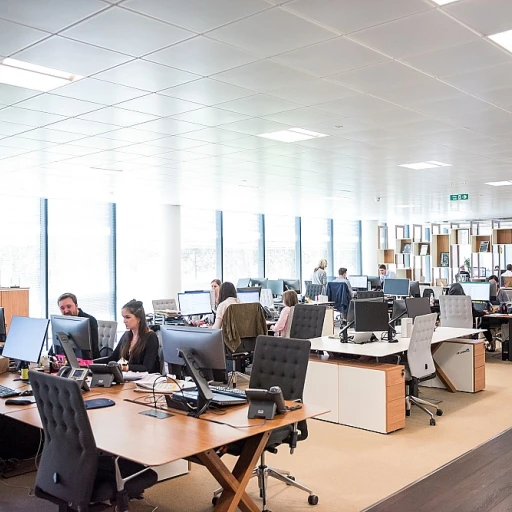Understanding the Role of Executive Retreats
The Strategic Importance of Executive Retreats in Leadership Transition
Corporate retreats offer a unique environment where the executive team can focus on the nuances of strategic planning and leadership succession. The secluded retreat location provides a haven for open dialogue and strategic thinking, free from the distractions of everyday corporate life. This setting enables leaders to explore team dynamics and build a cohesive leadership team ready to meet future challenges.
Executive retreats bring together high-level team members to engage in a variety of team-building activities that foster trust and strengthen the company culture. These experiences are invaluable for enhancing the executive leadership's readiness to ensure long-term success in succession planning. Retreats are carefully planned events, allowing ample time for reflection on past achievements and setting actionable goals for the future.
Moreover, luxury and privacy enable a focus on strategic discussions that are vital to successful leadership transition. As retreats enable executive leaders to share insights candidly, they rejuvenate the leadership team's focus and commitment to the company's enduring vision.
The importance of such executive retreats cannot be overstated. They help solidify strategic planning efforts, offering the leadership team the opportunity to align on vision, mission, and success metrics, hence ensuring that leadership transitions are handled smoothly and effectively. For further reading on leadership continuity insights, you might find this
board of directors newsletter particularly illuminating.
Key Elements of a Successful Executive Retreat
Creating a Comprehensive Retreat Experience
Developing an effective executive retreat requires more than just choosing a scenic location or luxury venue. A successful event incorporates a variety of elements that cater to the needs of both the executive team and the overall company objectives. Here's what goes into crafting a well-rounded retreat experience:
- Strategic Planning: Before the retreat, it's essential to establish clear goals. These should align with the broader strategic outlook of the company and foster long-term growth and leadership development. This ensures everyone is on the same page, maximizing the retreat's impact.
- Diverse Activities: Incorporating activities that promote team building and enhance team dynamics is crucial. These activities help strengthen relationships, improve communication, and foster a sense of camaraderie among team members, crucial components in maintaining a strong executive team.
- Personal Development: Providing opportunities for personal growth and leadership enhancement can serve as a driving force for change. Investing in such experiences during retreats offers executives the chance to reflect and focus on their roles within the company culture.
- Corporate Culture Focus: Reinforcing company culture through these experiences strengthens the alignment between individual and organizational values, further embedding it within the leadership team.
- High Level Privacy Setting: The retreat location should offer the necessary privacy and exclusivity for candid discussions and decision-making without external disruptions, a critical factor in advancing executive leadership.
By integrating these elements, companies can craft a retreat that not only caters to the immediate benefits of the event but also contributes to the greater succession planning strategy. For a more in-depth understanding of how retreats can complement leadership development training such as DEIA, consider
exploring DEIA training initiatives.
Aligning Retreat Goals with Succession Planning Objectives
Fostering Cohesion in Leadership Teams
The effectiveness of executive retreats can be significantly enhanced when their goals are aligned with the broader objectives of succession planning. By concentrating on building a unified leadership team, companies can leverage these retreats to strategically prepare for future transitions. Retreats offer a unique environment for high-level executives to focus on long-term strategic planning while engaging in activities that enhance team dynamics and trust.
During these events, it is crucial to ensure that the leadership team has time for both individual reflection and collaborative discussions. This balance allows for personal growth and collective team building. A well-structured retreat will provide opportunities for open communication, leading to improved team dynamics and a stronger company culture.
Corporate retreats are also an opportunity to delve into the strategic planning needed for seamless leadership transitions. By setting clear objectives and designing activities that support these goals, a company can create a cohesive path forward that aligns with its mission and values.
Retreats offer more than just a luxury experience; they are designed as a crucial part of long-term planning. When executed effectively, they become integral to fostering an environment where each team member contributes to the success of the company. To learn more about aligning executive retreats with effective succession planning, explore our insights on
building effective coaching relationships in succession planning.
Case Studies: Successful Leadership Transitions
Real-World Applications: How Successful Leadership Transitions Transpire
Successful leadership transitions often hinge on well-orchestrated executive retreats that align strategic goals with the company culture. In recent years, several organizations have shared their experiences, providing insight into what makes an executive retreat truly impactful.
One major corporate entity shared that their transition was influenced by a retreat focused on strategic planning and building activities that fostered a unified vision among the executive team. This company emphasized a setting that encouraged openness and team dynamics, shaping a more cohesive leadership team prepared for the challenges ahead.
Another organization operating in the luxury sector conducted an executive retreat with a unique twist—integrating team building with a series of high-level discussions about long-term goals. This retreat experience allowed the executives and team members to collaborate in a relaxed, private location, enhancing their strategic focus by providing a distraction-free environment to develop concrete action plans.
A notable experience from a tech company illustrated how retreats offer the chance to not only plan but also inspire. By dedicating time to reflect on company values, they were able to redefine their corporate retreats to echo their evolving mission, improving leadership coherence and ultimately impacting succession planning positively.
These case studies highlight the crucial elements that shape successful retreats, including thoughtful setting, commitment from the leadership team, and alignment of retreat activities with broader company objectives. As companies continue to navigate complex market environments, leveraging executive retreats can be a transformative strategy in fostering effective leadership transitions.
Challenges and Solutions in Organizing Executive Retreats
Overcoming Obstacles in Planning Executive Retreats
Organizing an effective executive retreat presents several challenges, each of which must be addressed to ensure a successful outcome. Understanding the dynamics of an executive team and the necessity for strategic planning can substantially aid in overcoming these hurdles.
One of the primary challenges is finding a suitable retreat location. Executives require a setting that fosters both creativity and strategic thinking while offering the privacy necessary for candid discussions. Luxury venues can cater to these needs but balancing cost and comfort remains an ongoing concern for many companies.
Additionally, aligning the retreat's agenda with the broader company culture poses another challenge. For retreats to be successful, activities need to reflect and enhance the existing culture rather than impose an external set of values. Engaging in team building activities that emphasize leadership skills is crucial in maintaining team focus on long-term objectives.
Time is also a critical factor; executives often have packed schedules, and freeing up enough time for a meaningful retreat can be difficult. Therefore, ensuring that the retreat offers enough value to justify the time away from regular duties is essential. It will be crucial to emphasize strategic planning during this time to maximize outcomes.
Moreover, planning executive retreats requires meticulous attention to team dynamics and the group’s overall experience. A well-organized retreat should foster a strong sense of unity within the leadership team, providing a foundation for future cooperation and decision-making.
Lastly, it's important to consider how to measure the impact of such events. Discovering the tangible benefits of corporate retreats after they occur is necessary to validate the investment and time spent away from the day-to-day operations. Therefore, establishing clear goals and KPIs prior to the event can help in assessing the retreat’s success.
In overcoming these challenges, companies can better structure their leadership transitions to ensure a smooth and effective process.
Measuring the Impact of Executive Retreats on Succession Planning
Evaluating the Impact of Retreats on Leadership Succession
To gauge the success of executive retreats in facilitating leadership transitions, companies need to prioritize strategies for assessing their impact. Analyzing the outcomes of retreats is crucial, as these events should offer more than just a short-lived team-building experience.
One key aspect to consider is the alignment of retreat activities with the company's long-term strategic planning objectives. This alignment ensures that team members can integrate their retreat experience into everyday leadership roles. Observing changes in team dynamics over time provides insights into the effectiveness of the retreat.
Organizations may choose to evaluate the event's impact by considering several factors:
- The growth in executive leadership clarity and confidence following retreat activities.
- The development of cohesive company culture, as demonstrated by improved collaboration and communication among the leadership team.
- Quantifiable improvements in decision-making processes that can be linked to strategic activities conducted during the retreat.
Additionally, post-retreat evaluations should assess whether the retreat location and privacy setting provided an environment conducive to meaningful reflection and focused discussion.
High-level measures, such as analyzing leadership team engagement levels and succession readiness scores, can provide further clarity on the retreat's contributions.
By involving the leadership team in evaluating these aspects, companies can understand the strengths and areas for improvement in their retreat strategy, thereby enhancing future planning and execution. This comprehensive evaluation underscores the retreat's value in shaping the executive team's effectiveness in leading the company into the future.













